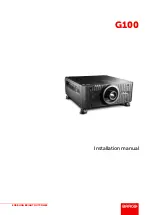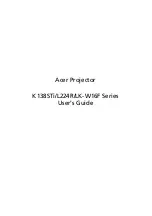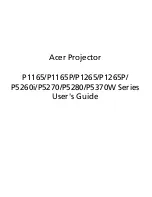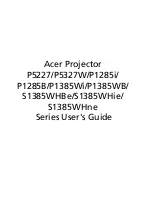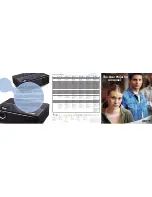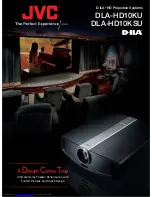
8.0 ADJUSTING THE IMAGE
56
R599790 - FORCE Series User Manual
NOTE: A separate PC utility is needed to do this. The 2.22 curve is a power curve typically used to encode graphics
and video sources. The 'standard' curve (auto setup default) is a modified 2.22 curve with a small linear section in
the black that enhances the detail in darker areas of the projected content. Typically standard or 2.22 is used for all
sources. Alternatively, if neither default is ideal, apply a simple gamma curve by defining a custom power function
and slope. Select Gamma Function from the drop down list to enable the Gamma Function and Gamma Slope
controls. For more complex non-standard gamma curves, a user-defined curve created externally and downloaded
to the projector can be used (requires separate PC-based Arbitrary Gamma software application to create the table
and the Web UI to download it). NOTE: If any of these special user curves have been installed, their names will
appear in the Gamma Table pull-down list.
• Gamma Function
Defines the base gamma power curve used when the base gamma table value is set to Gamma Function. This
value, combined with gamma slope setting determines the base gamma table to be used as the custom base table.
The curve is generally a power curve with a small linear segment at the bottom defined by the slope.
• Gamma Slope
This control defines a slope to be used for the base custom gamma table for a small section at the bottom of the
curve. This slope can be used to bring in or out the low level blacks in the image. This slope combined with the
gamma function, define the custom gamma table.
Detail Settings
Adjusts the sharpness of the image. Setting detail above the halfway point can introduce ‘noise’ in the image. Lower
settings can improve a noisy signal.
• Detail
Adjust the sharpness of the image. Setting detail above the halfway-point can introduce noise in the image. Lower
settings can improve a noisy signal. This command does not take effect unless the minimum change required in the
Detail Threshold control is reached.
• Texture Enhancement
Applies texture detail enhancement based on adaptive horizontal, vertical, and diagonal large edge and small edge
enhancement processes.
• Detail Threshold
Selects a filter sensitivity to noise. A higher value may improve noisy sources especially for higher settings of detail.
• Detail overshoot
Minimizes ringing on the enhanced edges detail and texture effects.
• Split Screen
Allows a snap shot of the main image to be presented on the right side of the screen to allow evaluation of
advanced image processing features. All resizing controls are honoured on both images; however, image
processing controls only happen on the left side image. Changing inputs, channels or test patterns will disable this
control. NOTE: PIP and Tiling operation must be disabled prior to enabling this control.
Noise Reduction Settings
• Noise Reduction
Selects a filter sensitivity to noise. A higher value may improve noisy sources, but it will soften the image.
• Block Artifact Reduction
Locates and reduces block edges produced by discrete cosine transform (DCT) based compression processing.
• Mosquito Noise Reduction
Reduces mosquito artifacts around sharp edges in DCT based compression by dynamically adapting to image
content.
Color Settings
• Select Color Adjustment
Select the output color adjustment most suited to this input signal. The options include the following:
•
Max Drives - All color adjustments are turned off allowing the projector to run at maximum brightness.
•
Color Temperature - Allows you to specify a color temperature between 3200 and 9300 based on the setting of
the color temperature slidebar.
Expressed in degrees Kelvin [3200K, 5400K, etc.]. Lower numbers appear reddish white and higher numbers
appear bluish.
Summary of Contents for Force one
Page 1: ......
Page 99: ...16 0 APPENDIX DIMENSIONS R599790 FORCE Series User Manual 99...
Page 100: ......































